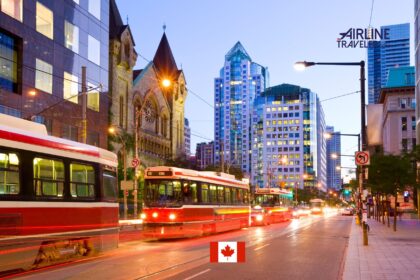Introduction
Australia, with its diverse landscapes, unique wildlife, and vibrant cities, is a dream destination for travelers worldwide. From the iconic Sydney Opera House to the breathtaking Great Barrier Reef, Australia offers a plethora of experiences throughout the year. However, the best time to visit this vast continent varies depending on your preferences, budget, and desired activities. In this complete guide, we’ll explore the different seasons and best time to visit Australia to help you plan your perfect trip.
Seasons in Australia
Australia experiences four distinct seasons, but due to its size and geographical diversity, the climate can vary significantly from region to region. Understanding the seasons is crucial for determining the best time to visit each part of the country.
Summer (December to February):
Summer in Australia brings warm temperatures and sunny days. It’s an ideal time for beach lovers and outdoor activities. However, popular tourist destinations can get crowded, and prices may be higher during this peak season.
READ ALSO: Exploring the Serenity of Karloo Pools in Royal National Park: A Hiking Guide
Autumn (March to May):
Autumn offers pleasant weather with mild temperatures and fewer crowds compared to summer. It’s a great time to explore outdoor attractions, national parks, and wineries. The landscapes transform with vibrant foliage, making it a photographer’s paradise.
Winter (June to August):
Winter in Australia varies from mild to cool, depending on the region. It’s the best time to visit the northern parts of the country, such as Queensland and the Northern Territory, where temperatures remain warm. Winter is also ideal for exploring the Outback and enjoying winter festivals in cities like Melbourne.
Spring (September to November):
Spring brings warmer temperatures and blooming flowers, making it perfect for outdoor adventures and wildlife spotting. It’s an excellent time to visit destinations like the Blue Mountains and the Great Ocean Road. However, it’s essential to be mindful of pollen allergies if you’re sensitive to seasonal changes.
Best Time to Visit Each Region
East Coast (Sydney, Brisbane, Cairns):
Summer (December to February) is great for beach activities and water sports along the east coast.
Autumn (March to May) offers pleasant weather and fewer crowds, making it ideal for exploring cities and coastal attractions.
Winter (June to August) is perfect for exploring the Great Barrier Reef and enjoying outdoor adventures in Queensland.
Spring (September to November) is excellent for whale watching along the coast and exploring national parks.
Outback and Northern Territory (Uluru, Alice Springs, Darwin):
Winter (June to August) is the best time to visit the Outback and Northern Territory due to milder temperatures.
Summer (December to February) should be avoided due to scorching heat, but if you visit, opt for early morning or late afternoon activities to avoid the heat.
Western Australia (Perth, Margaret River, Broome):
Autumn (March to May) and Spring (September to November) offer pleasant weather for exploring Western Australia’s stunning landscapes and coastline.
Summer (December to February) can be hot, but it’s ideal for beach holidays and outdoor adventures.
Tasmania:
Summer (December to February) is perfect for outdoor activities and exploring Tasmania’s national parks.
Autumn (March to May) brings cooler temperatures and beautiful foliage, making it ideal for hiking and sightseeing.
Winter (June to August) can be chilly, but it’s the best time for enjoying winter festivals and spotting wildlife like whales and seals.
Spring (September to November) offers mild weather and blooming flowers, making it a picturesque time to visit.
Choosing the best time to visit Australia depends on your interests, budget, and preferred activities. Whether you’re looking for beach relaxation, wildlife encounters, or outback adventures, there’s a perfect time to experience everything this diverse country has to offer. By considering the seasons and regions outlined in this guide, you can plan an unforgettable trip to Australia, tailored to your preferences.
Frequently Asked Questions: Best Time to Visit Australia Guide
When is the best time to visit Australia for a beach vacation?
The best time for a beach vacation in Australia is during the summer months of December to February. During this time, the weather is warm and sunny along the coast, perfect for swimming, surfing, and sunbathing.
What is the peak tourist season in Australia?
The peak tourist season in Australia is during the summer months of December to February. This period coincides with school holidays and festive celebrations, resulting in higher prices and larger crowds at popular tourist destinations.
When is the best time to visit the Great Barrier Reef?
The best time to visit the Great Barrier Reef is during the winter months of June to August. During this time, the weather is dry, and water visibility is at its best, making it ideal for snorkeling, diving, and exploring the reef’s vibrant marine life.
What is the weather like in Australia during the winter months?
The weather in Australia during the winter months varies depending on the region. In the northern parts of the country, such as Queensland and the Northern Territory, temperatures remain warm, while southern regions experience cooler temperatures and occasional rainfall.
When is the best time to visit the Outback and Uluru?
The best time to visit the Outback and Uluru is during the winter months of June to August when temperatures are milder and more comfortable for outdoor activities such as hiking and sightseeing.
What are the shoulder seasons in Australia?
The shoulder seasons in Australia are autumn (March to May) and spring (September to November). During these times, the weather is generally pleasant, and there are fewer crowds compared to the peak summer season, making it a great time to explore popular tourist destinations.
Is it possible to visit Australia during the summer without facing excessive crowds?
While summer is the peak tourist season in Australia, it is still possible to avoid excessive crowds by visiting less popular destinations or booking accommodations and attractions in advance. Additionally, exploring outdoor attractions during weekdays can help minimize crowds.
What should I pack for a trip to Australia?
When packing for a trip to Australia, it’s essential to pack lightweight and breathable clothing, sunscreen, a hat, sunglasses, swimwear, insect repellent, and comfortable walking shoes. Depending on the season and region you’re visiting, you may also need to pack layers for cooler evenings.
Are there any festivals or events worth attending in Australia?
Australia hosts a variety of festivals and events throughout the year, including the Sydney New Year’s Eve fireworks, Vivid Sydney festival, Melbourne International Comedy Festival, and the Cairns Festival. Researching local events and festivals can enhance your travel experience and provide insight into Australian culture.
What are the visa requirements for visiting Australia?
Visitors to Australia typically need a visa to enter the country. The type of visa required depends on factors such as the purpose of your visit, nationality, and length of stay. It’s recommended to check the official website of the Australian Government Department of Home Affairs for the most up-to-date visa information and application processes.
Conclusion
In conclusion, planning the best time to visit Australia involves considering various factors such as weather preferences, desired activities, and crowd levels. Whether you’re dreaming of sunny beach days, outback adventures, or exploring vibrant cities, Australia offers something for every traveler year-round.
For those seeking warm weather and beach relaxation, the summer months from December to February are ideal, while autumn and spring provide pleasant temperatures and fewer crowds for exploring popular attractions. Winter offers unique opportunities such as diving in the Great Barrier Reef and exploring the Outback without the scorching heat.
By understanding the seasons and regions of Australia outlined in this guide, travelers can tailor their itinerary to make the most of their Australian adventure. Whether you’re embarking on a solo journey, a family vacation, or a romantic getaway, Australia promises unforgettable experiences at any time of the year.
In another related article, Top 10 Must Do Activities in Wollongong, Australia’s Hidden Gem






